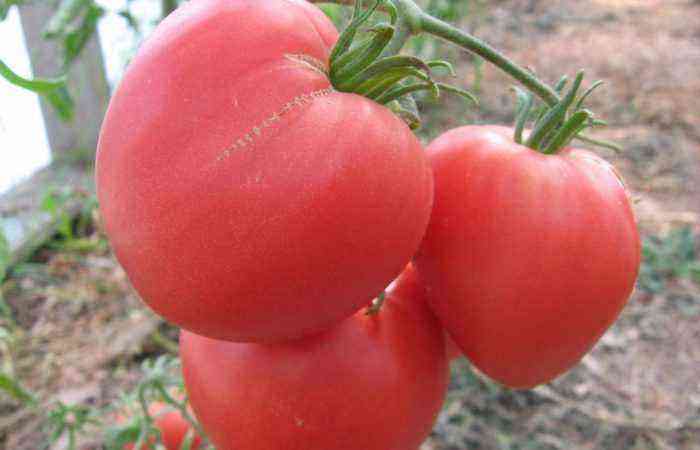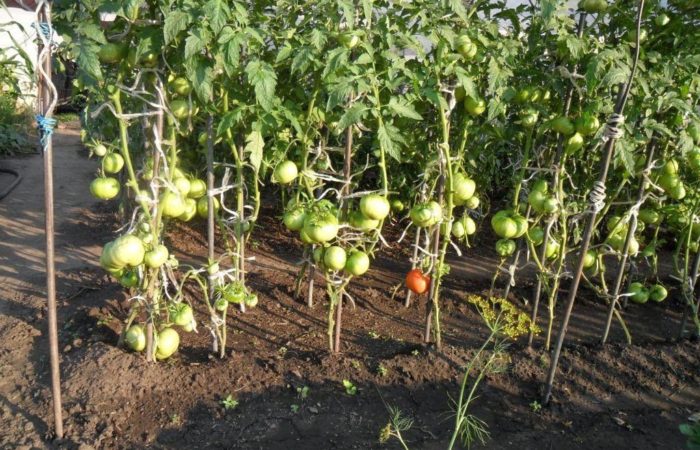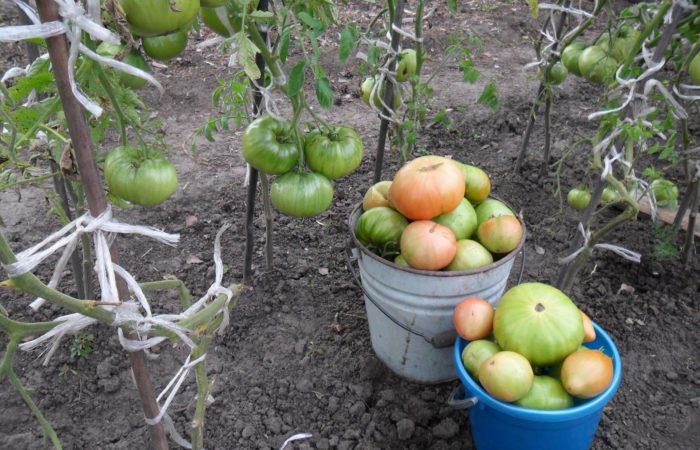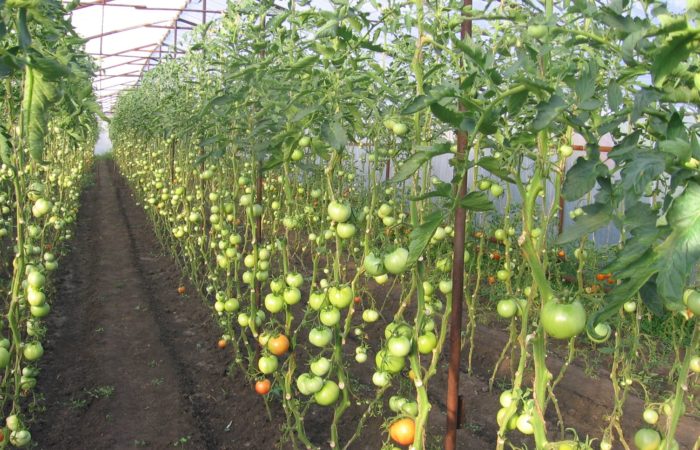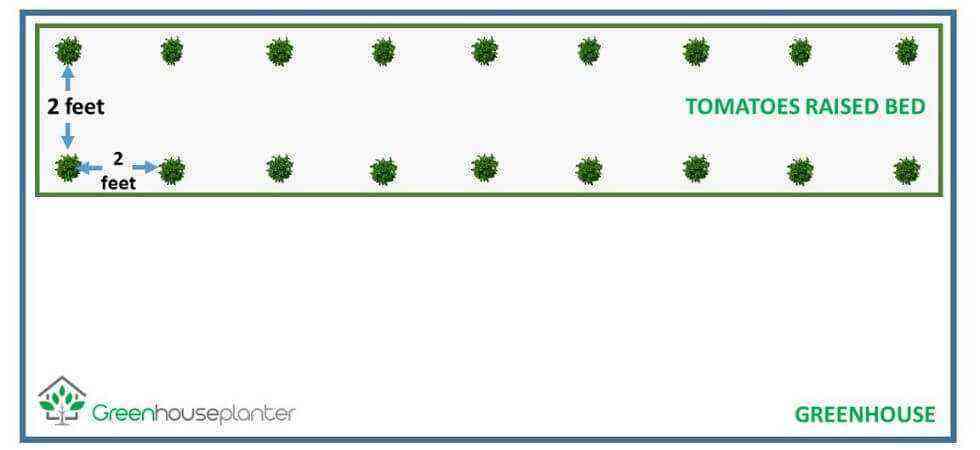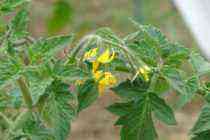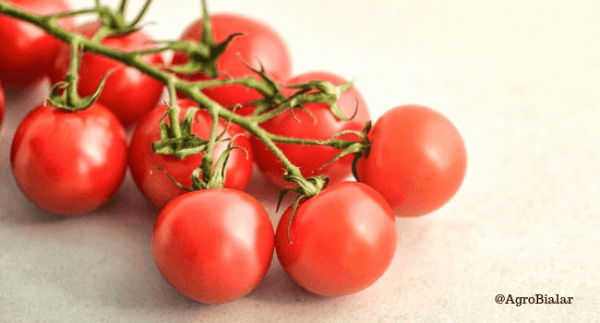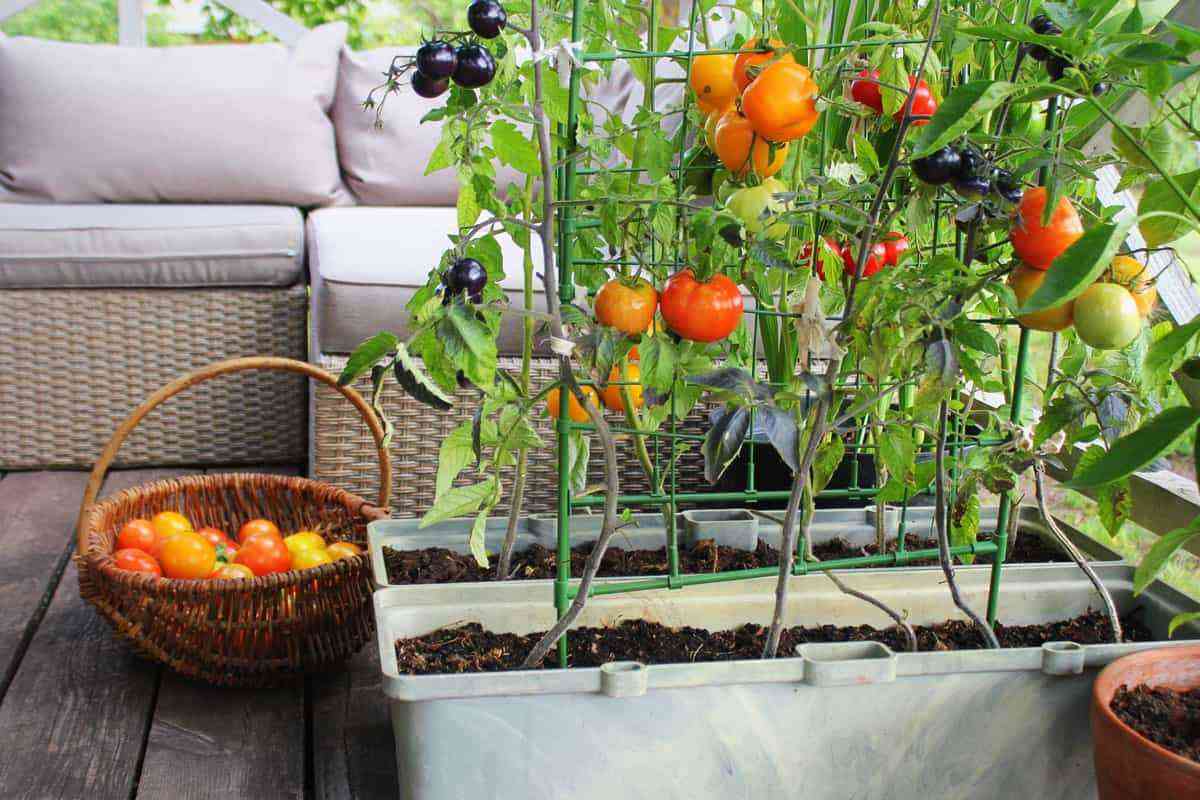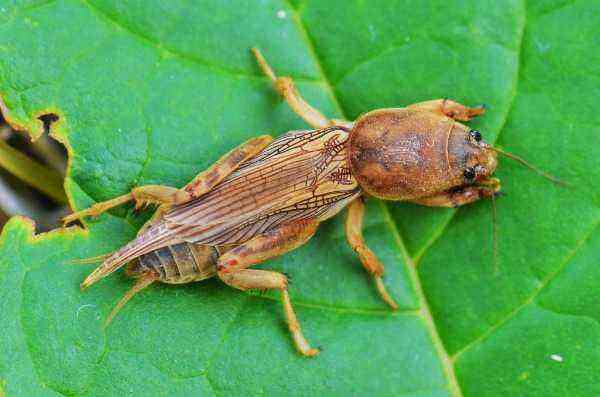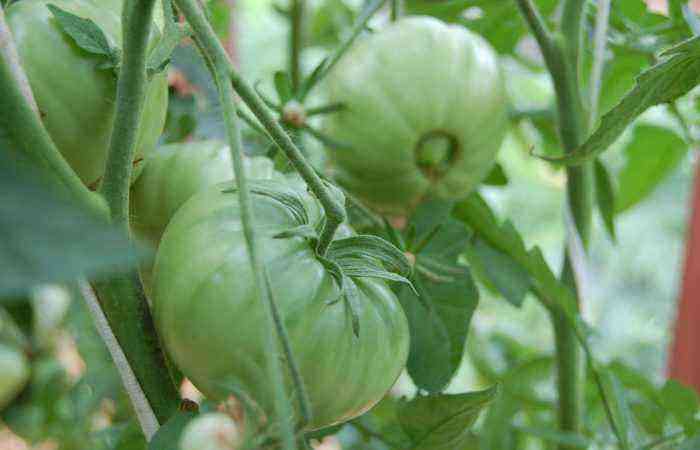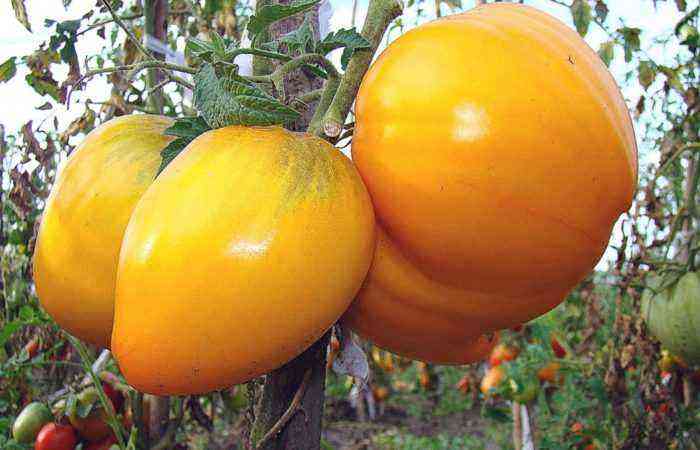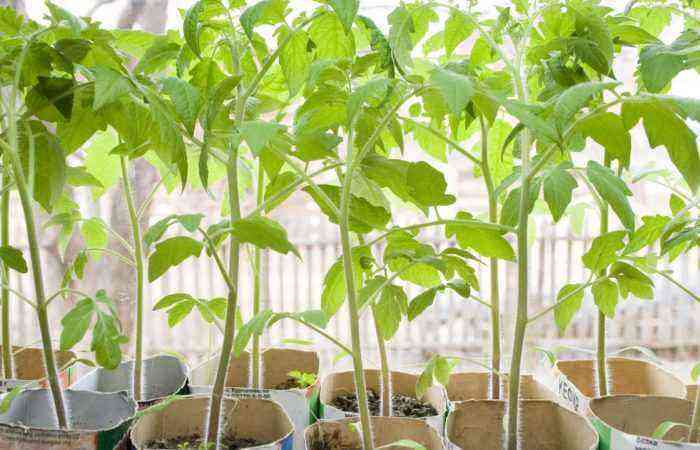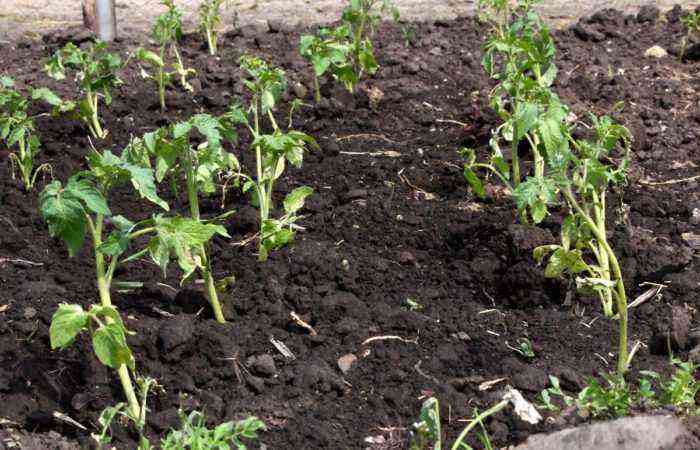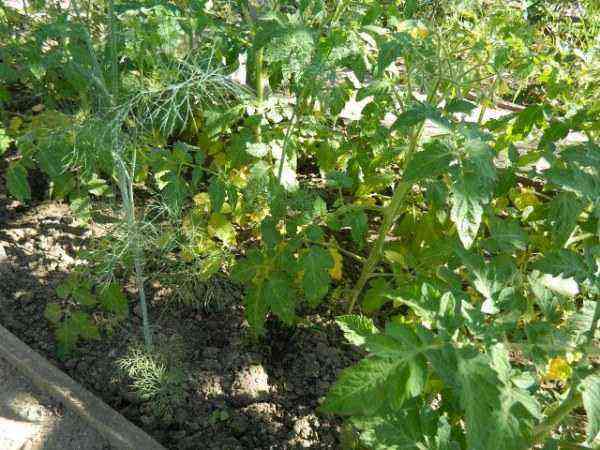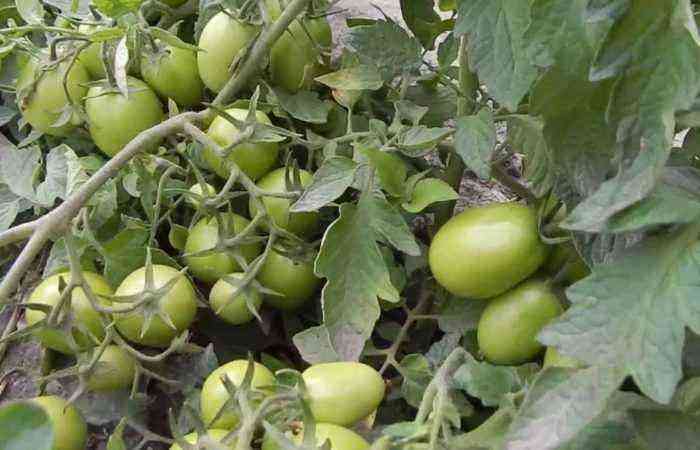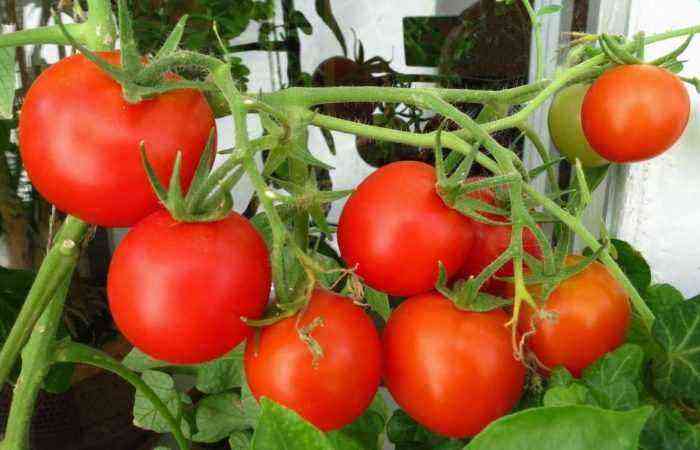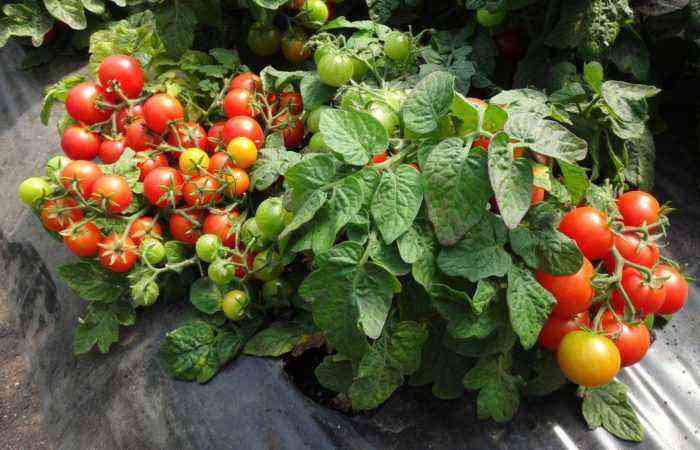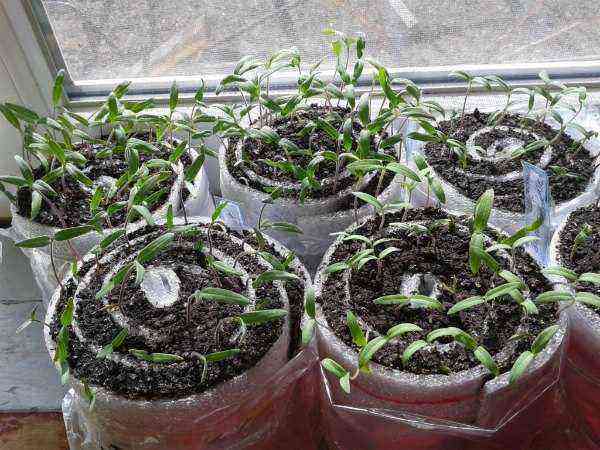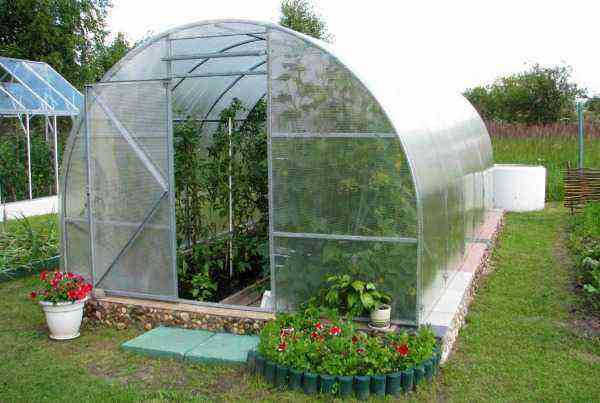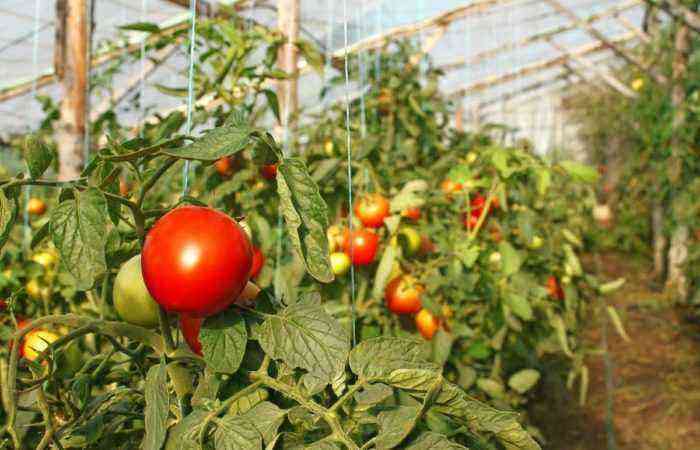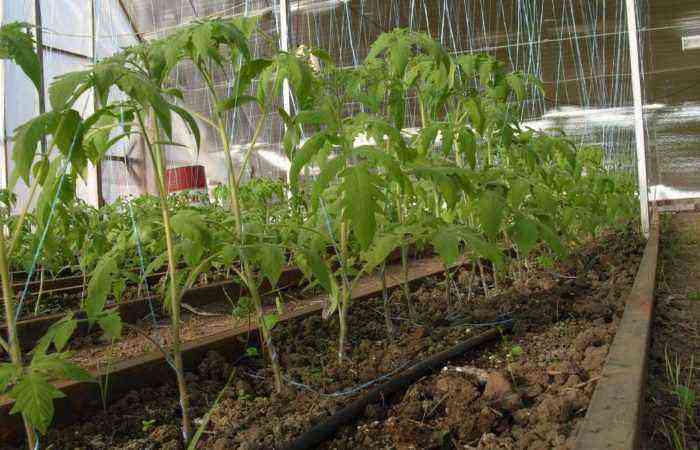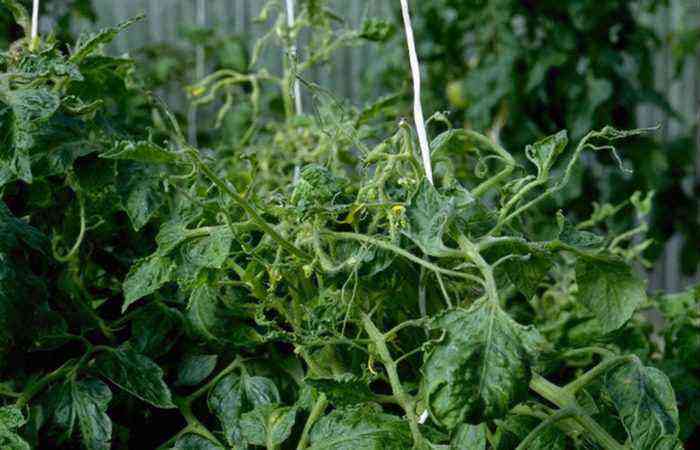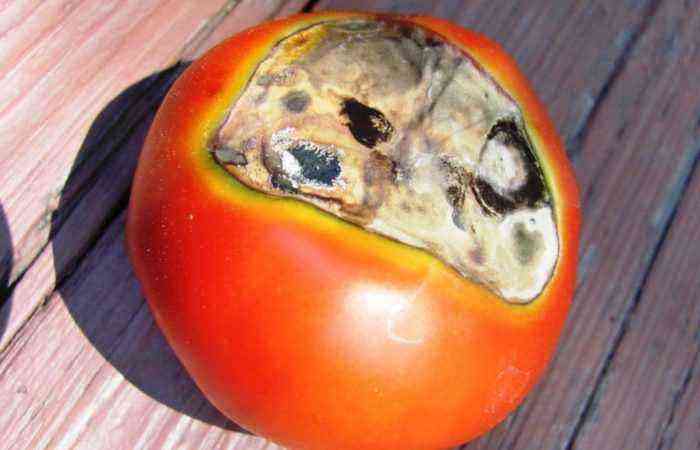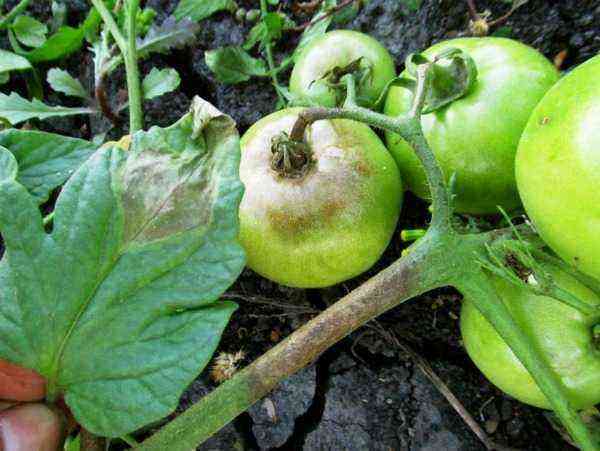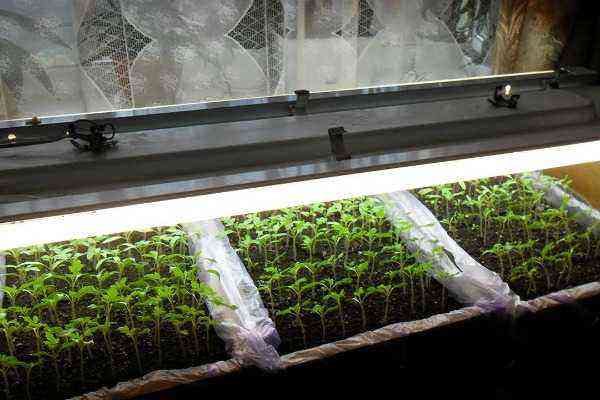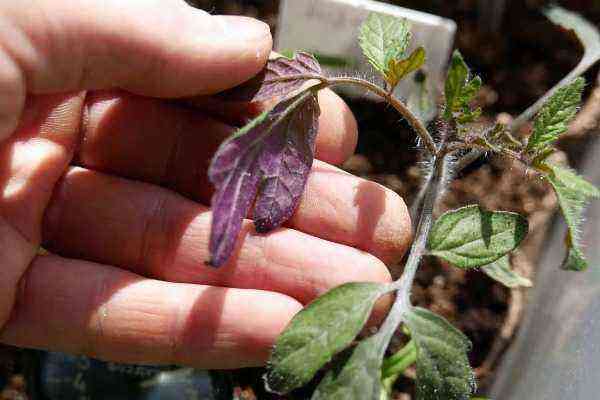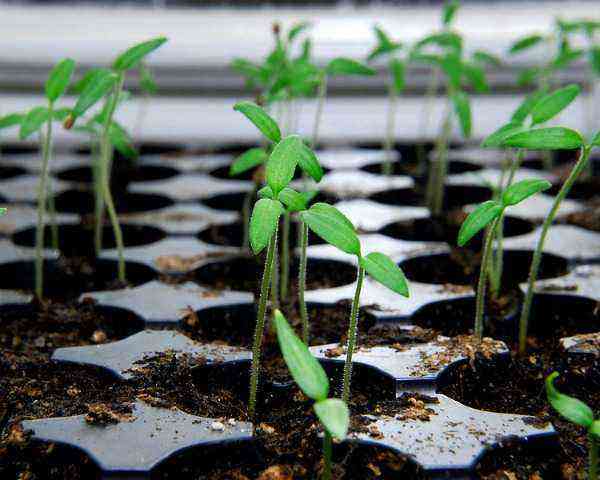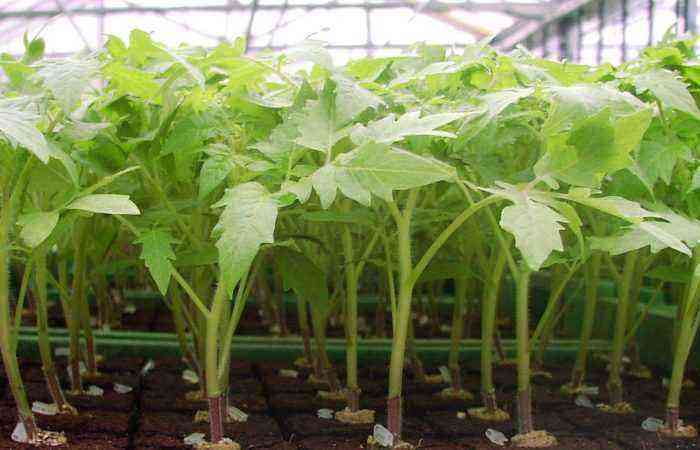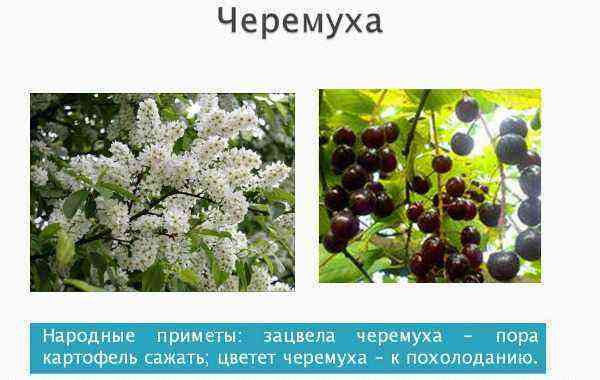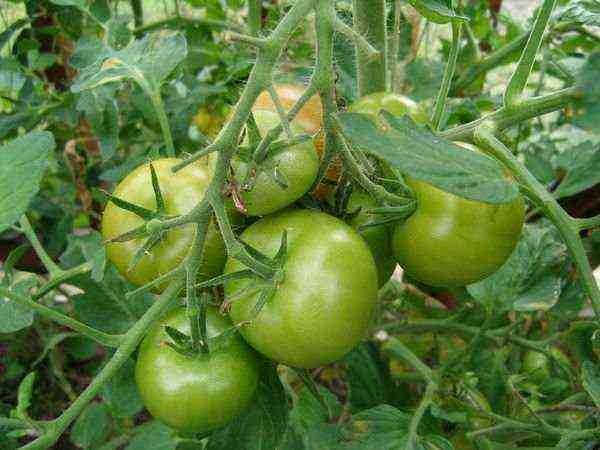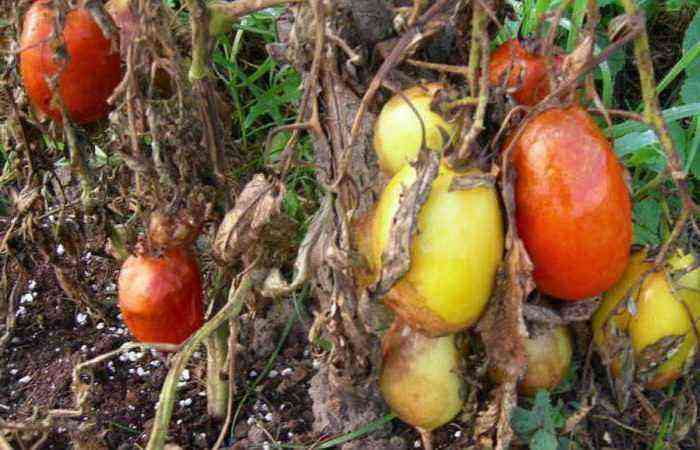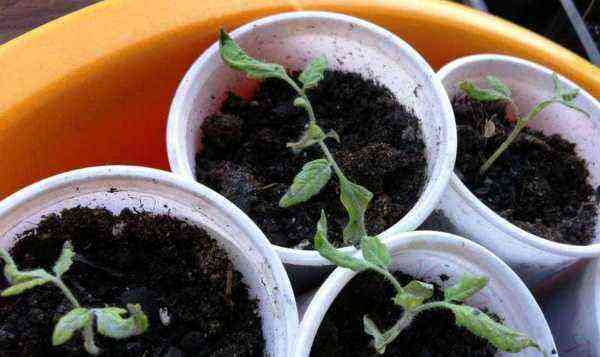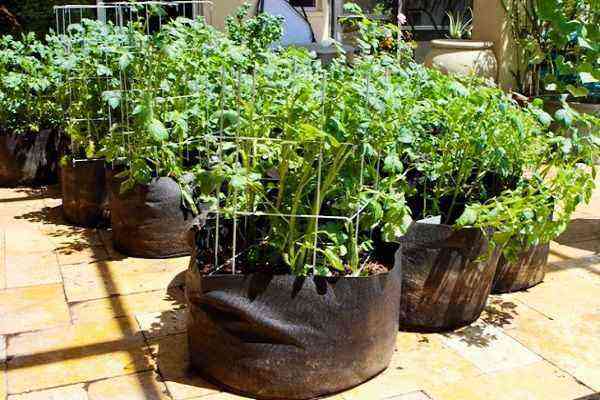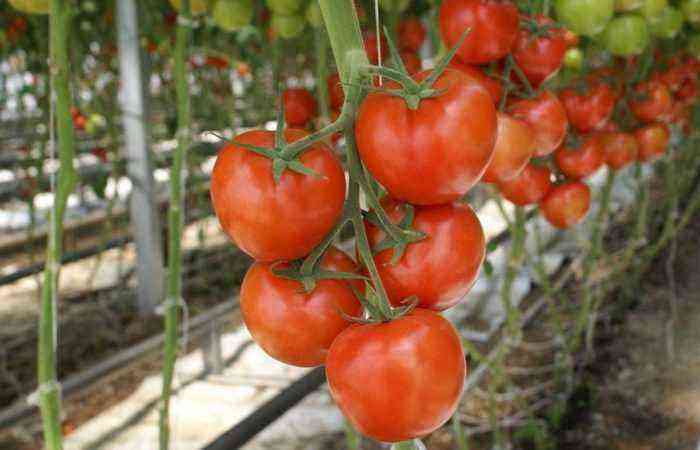There are a lot of varieties and hybrids of tomatoes, they all differ from each other in the shape, color and taste of fruits, the number and size of seeds and seed chambers, the structure of the pulp, the ripening time of the crop, and resistance to diseases. And they also differ significantly in the size and type of the bush, its growth and the number of formed flower ovaries.
By weight, the fruits of tomatoes vary from 20 to 1000 g, and the growth of the plants themselves – from 30 cm to 2.5 m, and sometimes more. Depending on the ability of the plant to grow up and lay a crop, that is, according to the type of development of the vegetative system, tomato varieties differ in determinant and indeterminate.
Characteristics
Indeterminate – these are tall plants that do not top, that is, they have the ability to grow up and to the sides indefinitely. The stem of the plant is liana-shaped. At the same time, the plant not only constantly grows upwards, but also forms flower brushes and forms ovaries every 3 leaves.
Vehetatsyonny period
Plants of this variety have a significant growing season. In favorable protected ground conditions, some specimens can grow and bear fruit for up to a year. This feature is used in heated greenhouses in order to make the most of the entire season with natural light without replanting the vegetable crop.
Productivity
During the growing season, with sufficient nutrition and favorable conditions, the plant is able to form up to 50 full-fledged flower brushes. This allows you to get a high yield, much higher than that of undersized, determinant varieties. Up to 30 kg of tomatoes are harvested from 1 square meter of heated greenhouse area.
Variety geography
Indeterminate varieties of tomatoes are varieties of medium and late ripening, have a long growing season. Their normal development requires a long daylight hours. In heated buildings, they can be quite successfully cultivated in all southern, central and even northern regions.
In unheated greenhouses, plants can be grown no north of the central region, as early autumn frosts can stop growth, and low temperatures will promote the development of diseases.
In the central regions, it is possible to grow early varieties from indeterminate varieties, since later ones, if they have time to set fruits, their ripening will remain in question. In the open field, the variety is suitable for cultivation in the southern regions.
On the advantages and disadvantages of indeterminate tomato varieties
Main advantages:
- Efficient use of sown areas due to the formation of the crop up and the compact type of the bush.
- Reducing labor costs and saving money on planting material in protected ground due to the long growing season, which allows you not to replant plants during the year.
- fruiting duration.
- Significantly higher yield from 1 bush, compared with undersized plants.
- Ease of plant formation.
The list of disadvantages is short and is not a reason for not having such tomatoes on your site:
- Later start of fruiting, compared with determinant varieties (by 20-40 days).
- Requires more efforts to prevent diseases over a long period.
- In high greenhouses, devices will be required for caring for plants and harvesting at a considerable height.
- Unsuitable for outdoor cultivation in regions with short summers.
Indeterminate tomato varieties
For greenhouses, it is more rational to use varieties with medium-sized fruits: De Barao, Orange Miracle, Octopus, Vezha, Scarlet Candles, Marfa, Yellow Icicle. The weight of their fruits is from 80 to 200 g, transportable, universal, resistant to diseases.
For film greenhouses and open ground, it is better to choose mid-season large-fruited varieties: “Andreevsky Surprise”, “Grandmother’s Secret”, “Dulya”, “Bull’s Heart”, “Raspberry Cardinal”, “Budenovka”. These are fleshy fruits with high taste qualities. Well formed in 2 stalks and have time to give a solid harvest.
Features of seedling production
Terms of sowing seeds
Plants with a long growing season should be planted as early as possible in order to maximize the use of daylight energy to ripen more ovaries. Seedlings are planted in the ground at the age of 55-65 days. To this period, you need to add another 5-7 days for seedlings grown with a pick.
With this in mind, it is possible to calculate the time for sowing seeds for seedlings, which will depend on what type of greenhouse or open ground it will be planted in.
For heated greenhouses, seedlings can be prepared as early as December, but in this case, additional illumination of seedlings will be required to lengthen daylight hours.
Attention! The seed container must be treated for disinfection with a weak solution of potassium permanganate or scalded with boiling water.
For sowing seeds, it is better to use special soils that are fully balanced in terms of the main parameters.
Seed sowing
If everything is ready for sowing, the terms are determined, approximately 2/3 of the seedling mixture is poured into the prepared container, which is well moistened beforehand.
Advice! Do not water the soil after sowing the seeds, as this contributes to their absorption into the soil, deterioration of germination and air exchange.
Sow in furrows with row spacing of about 5 cm, with a distance of 1.5-2 cm between seeds, to a depth of 1.5 cm.
When to dive?
A pick is the transplantation of seedlings into a looser container (with a size of at least 8 × 8 cm). It stimulates the development of the root system in seedlings. Pinch the tap root to form lateral branching. Picking is carried out after 1-2 true leaves emerge from the cotyledons.
This period begins 10-14 days after sowing, depending on the variety and growing conditions.
In this video, the author tells how best to do the formation of indeterminate tomato varieties grown in a greenhouse.
Agrotechnics of tall tomatoes
Tall tomatoes are planted in unheated greenhouses and open ground at the same time as low-growing ones, upon the onset of favorable weather conditions (soil temperature at least 10 ° C, air temperature – 14-15 ° C), depending on the region. Before planting in the ground, it is necessary to determine how to form a plant, since the number of plants per 1 sq. m..
- in one stem – better than 3, less often – 4 plants;
- in two stems – 2.5 plants.
Important! Plants will need a lot of space and fresh air to form a large number of ovaries, dense plantings will adversely affect the yield.
We form a bush correctly
The guarantee of success when growing tall varieties is a well-formed bush, since in the absence of growth control, the plant’s strength will be spent on the formation of green mass, and not on the ripening of fruits.
- In one stem
Thus, late varieties of indeterminate tomatoes are formed. This means that only the main stem (apical bud) is left for vegetation, and all the resulting lateral shoots are broken out, leaving a slight stump in the bosom to prevent the shoot from re-forming. Breaking off the shoots must be carried out regularly, since the removal of a stepson larger than 5 centimeters injures the plant.
This is how a bush is formed in unheated greenhouses and open ground, so that more fruit clusters form in a shorter growing season. The first healthy shoot is left on the main stem, located below the first fruit cluster, and the rest are broken out. For this type of bush, mid-season varieties are more suitable.
Attention! The formation of indeterminate tomatoes in more than two stems is impractical, as this contributes to the thickening of the bush, the deterioration of air exchange and the development of diseases.
- Without support – nothing
Tall tomatoes definitely need a stable support. In the open field, this can be rods for each plant or a strong trellis, a crossbar between two posts, to which several plants can be tied. You need to fasten the trellis high, given the growth of an adult plant. A large number of brushes pulls the stem down, so it is necessary to tie each fruit brush with a soft, wide cloth so as not to injure the stem.
Also tomatoes – but so different
Indeterminate varieties can be distinguished from determinant varieties already at the seedling stage. They stretch upward faster, the distance between the nodes is longer, the first flower brush is formed only after 9-12 leaves, the next – every three. Determinate seedlings are more stocky and after 4 leaves form a flower brush.
The choice of variety depends on the ripening period, fruit size, resistance to diseases and adverse conditions, and appearance.
Indeterminate tomato varieties are economically feasible. They are indispensable for the rational use of the usable area of greenhouses and small plots. When following the simple rules of agricultural technology, these varieties will delight with a bountiful harvest.
